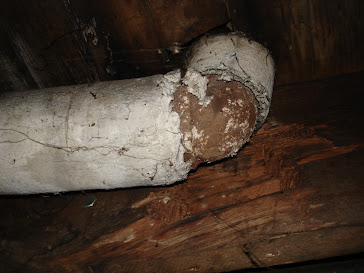Properly Advising Your Client About Asbestos

Just about every week I get asked that question. Home inspectors are fully aware that the “A” word could create confusion and fear in our clients. Most standards of practice & code of ethics we follow do not recommend or allow us to note that Asbestos is present without first testing for it. Of course those of us that have been doing this for any length of time know what Asbestos looks like and where it is commonly found. Many people think that Asbestos is no longer in any products on the market. If you think asbestos is banned in the U.S., that is not the case. From 1973 to 1978, the United States Environmental Protection Agency (EPA) did ban everything from asbestos pipe and block insulation to the use of asbestos in artificial fireplace embers and wall patching compounds. In 1989, the EPA issued a final rule under Section 6 of Toxic Substances Control Act (TSCA) banning most asbestos-containing products. However, just a few years later, the rule was vacated and remanded by the Fifth Circuit Court of Appeals. As a result, most of the original ban on the manufacture, importation, processing, and distribution in commerce for the majority of the asbestos-containing products originally covered in the 1989 final rule was overturned. Today, asbestos is still used in dozens of products, and the public might not be aware of just how close to home these products are. Asbestos is the only cause of mesothelioma, so it is important to be aware of the products that still contain this deadly mineral. We know that Asbestos can be found in insulation of boiler / stem pipes, around forced air ducts, insulation, siding materials, roofing materials, & inside or around old fuse boxes. It still is used in the following areas:
- Construction Materials – Many homes built before 1980 already have asbestos in their flooring, insulation, plaster, and paint. Today, it is still legal to manufacture, import, process and distribute asbestos-containing construction materials such as cement corrugated sheet, flat sheet, pipe, and shingle, non-roof coatings, pipeline wrap, roof coatings, roofing felt, and vinyl tile floor.
- Car Parts – Asbestos can still be found in automatic transmission components, brake blocks, clutch facings, disk brake pads, drum brake linings, friction materials, and gaskets.
- Fertilizer and Potting Soil – According to the Illinois Department of Public Health (IDPH), vermiculite (which may contain a type of naturally occurring asbestos called tremolite-actinolite) has been used in some potting soil and fertilizer. The IDPH says the mineral is used in potting soil for plant growth, and it appears as bright gold or silver flakes.
- Talc – Although talc isn’t made with asbestos today, Consumer Safety says, “in nature, talc deposits occur together with asbestos, and mined talc can easily become contaminated with asbestos.” Some companies have been sued over talc products that have been found to contain asbestos.
How should a home inspector properly advise their clients and a link to A Homeowners Guide To Asbestos & Removal and a Vermiculite removal program that will financially assist your clients when Asbestos is suspected:
- When you suspect Asbestos recommend your client have the material in question tested for hazardous materials including Asbestos. Make sure this recommendation is in your written report
- Explain to them that products containing Asbestos may not pose a risk if it has been properly encapsulated. Refer them to a professional who can further evaluate and advise them
- Do not disturb the material. Leave that to the professionals
- We do not recommend a home inspector test for Asbestos unless specifically trained because it would have to be disturbed which could cause a problem
- Advise the homeowner if they plan to perform any construction work in the area where the Asbestos is contained to contact a professional first to ensure it is safe
- If the Asbestos is not friable, and in areas where it will not come into contact with individuals, it may not pose a risk to the occupants. Recommend further evaluation and testing.
- Any friable Asbestos should be removed by a trained abatement company
- For Vermiculite suspected in insulation contact: Zonolite Attic Insulation Trust by CLICKING HERE. They have a program that will financially assist your clients in removing and re-insulating their attic\
- CLICK HERE for a Homeowners Guide to Asbestos & Removal you can share with your clients
Related Articles:
Want To Learn More? Click HERE to Search Our Full Database Of Home Inspector Newsletters.



